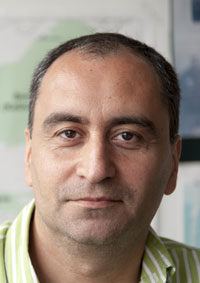Geowissenschaftliches Kolloquium - SoSe 2022
Vortrag von PD. Dr. Mahyar Mohtadi

Tropical and subtropical regions cover more than half of the Earth’s surface and are home to almost 80% of world’s population. The low latitude climate is characterized by complex coupled ocean-atmosphere interactions that affect the global hydrological cycle and temperatures. The Pacific and Indian Oceans play a critical role in this context due to their longitudinal extent at low latitudes, giving rise to climate phenomena such as the Australasian monsoon systems, "El Niño-Southern Oscillation" and the "Indian Ocean Dipole". Paleoclimatic evidence underscores the sensitivity of tropical climate dynamics to moist convection that is strongly shaped by large-scale meridional and zonal temperature gradients. This close coupling of low latitude climate components via feedback mechanisms makes them vulnerable to any perturbation in the oceanic and/or atmospheric temperature gradient causing a chain reaction. Consensus exists on the changing dominance of different forcing factors in time and space, with obliquity and precession representing the most dominant forcing on multi-millennial and longer timescales, ocean thermohaline circulation on centennial to millennial timescales, and solar and volcanic activity on annual to decadal timescales. Debate exists on the sign and degree of change that result from varying regional feedback mechanisms.

